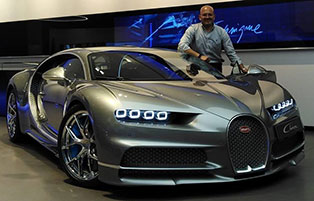Hyundai
Hyundai's new-generation i30 premieres at 2011 Frankfurt International Motor Show - i30 sold with industry-best, fully-transparent Five Year Triple Care warranty from Hyundai
Now this competition will become more fierce as Hyundai launched its new-generation i30 at the 2011 Frankfurt International Motor Show (IAA), a vehicle the company expects will build on the success of the original model thanks to enhanced design, quality, performance and efficiency.
Designed and engineered at the Hyundai Motor Europe Technical Centre in R?¼sselsheim, Germany, the new-generation i30 represents a further evolution of the unique Hyundai form language, â€?fluidic sculpture’ – the company’s distinctive design DNA – and offers a choice of four engines with a total of six power options and CO2 emissions below 100 g/km thanks to an upgraded, super-efficient 1,6-litre diesel unit.
The new-generation i30 will go on sale in Europe early in 2012 as a five-door hatchback. The newcomer will be produced in Europe at the company’s state-of-the-art manufacturing facility in No??ovice, Czech Republic.
Every new-generation i30 will be backed by the industry-best, fully-transparent Five Year Triple Care warranty from Hyundai. This award-winning package provides five years of unlimited-mileage warranty, five years of roadside assistance, and five years of vehicl
Such a Five Year Triple Care warranty will surely surely be a unique selling point for the Hyundai dealers in the Middle East and Egypt.
A worthy successor to Hyundai’s best-seller:
The original i30 has defied the industry norm by recording increased annual sales with each passing year. Since launch in 2007, the i30 has recorded over 360.000 European sales, including more than 115.000 units during 2010 – the highest-ever sales figure for an individual Hyundai model on sale in Europe in one year, putting the i30 at six in the C-segment rankings.
Hyundai expects the new-generation i30 to maintain this growth trend, contributing to future sales success, growing brand awareness and improving perceptions of Hyundai among European consumers.
The fortunes of the new-generation i30 will also be helped by a recovering market. Industry analysts forecast the mainstream C-segment will grow by 7% over the next three years, reaching sales of 2,4 million vehicles per year by 2014. Hyundai is planning to sell on average over 120.000 units of the new i30 per year during the car’s lifecycle, capturing a larger market share of around 5% and challenging established competitors.
Allan Rushforth, Senior Vice President and COO of Hyundai Motor Europe, commented: “We expect the new-generation i30 to play a significant role in developing our sales and brand image in Europe, taking on the leading vehicles in the C-segment and joining the all-new i40 as a brand ambassador and quality benchmark for Hyundai.�
Style inspired by nature
The �fluidic sculpture’ ethos utilises flowing lines inspired by nature and modern architecture to give a constant three-dimensional presence to Hyundai vehicles. Since its introduction on the Hyundai ix-onic concept at the 2009 Geneva Motor Show, fluidic sculpture has been the form language for all new Hyundai models launched in Europe.
Thomas B?¼rkle, Chief Designer at Hyundai Motor Europe Technical Centre, commented: “When designing the new-generation i30, we used strong, fluid lines to sculpt a car which looks athletic and exudes a sense of constant motion, even when stationary. We gave the car a bold stance, transmitting a confident attitude through sporty characteristics and dynamic proportions. In this way, the car is very close to the all-new i40, and the Hyundai design DNA is easy to recognise on these models.â€?
The new-generation i30 also bears Hyundai’s signature frontal feature – the hexagonal-shaped grille.
“The hexagonal appearance is unique to Hyundai, and defines the i30 as a family member. The jewel-like front headlamps which flank the grille add a strong personality to the vehicle, as well as a sense of refinement and luxury,â€? Thomas B?¼rkle added.
Powering the new generation
The new-generation i30 will be available with a choice of three gasoline and three diesel variants, with power outputs ranging from 90 to 135 ps. Both fuel types play a significant role in the European C-segment, with diesel representing 52% and gasoline 43% of total sales. Overall, Hyundai is expecting a 50:50 split between diesel- and gasoline-powered i30 sales.
Hyundai believes that its highly-efficient 1,6-liter variable geometry turbo (VGT) �U-II’ diesel unit will be the most popular engine in the range. Generating 128 ps at 4.000 rpm, the upgraded engine will accelerate the new-generation i30 from standstill to 100 kph in 10.9 seconds, with a top speed of 197 kph.
The petrol engines, too, offer a balance between performance and economy. For example, the new-generation i30 can be specified with Hyundai’s 1,6-liter �Gamma’ GDI (gasoline direct injection), a 1.591 cc unit that generates 135 ps and 164 Nm of torque.
Low emissions and real-world efficiency
The addition of technologies developed under the company’s Blue Drive™ sub-brand optimizes efficiency and lowers emissions for the new-generation i30. These include: Integrated Stop & Go (ISG), low-rolling resistance tyres and an alternator management system. With CO2 emissions below 100 g/km and an engine delivery of 128 ps, the 1,6-litre diesel new-generation i30 will feature a best-in-class power to efficiency ratio.
Buyers will be offered a choice between manual and automatic six-speed transmissions, with both units providing a refined driving experience and enhanced fuel efficiency.
Interior quality and equipment from the class above
Cabin refinement and specification on the new-generation i30 have been inspired by the high standards of the all-new i40. Behind the wheel, for example, drivers benefit from Hyundai’s new Flex Steer™ option. With three operating modes – Comfort, Normal and Sport – the system can be used to vary the level of steering assistance and feedback in order to suit driving conditions and make the journey more pleasurable. A large TFT Supervision cluster is available in the same quality found on i40 – providing a wide range of essential information to the driver in high-resolution clarity. Located in the centre console, the navigation system is displayed via a 7-inch touch-screen.
The generous equipment levels on the new-generation i30 will enhance the Hyundai experience for passengers too. Dual-zone climate control will ensure a comfortable environment for all occupants during long journeys, and the addition of a panoramic sunroof provides increased natural light within the cabin. The panoramic sunroof has been designed to open fully or tilt open, offering passengers flexibility and functionality.
Customers will benefit from the new-generation i30’s roomier interior compared to the previous model. The overall length (4300 mm) and width (1780 mm) have been increased, while the height has been reduced (1470 mm), generating sportier exterior proportions without compromising functionality. Cargo capacity in the new-generation i30 is 378 liters with the rear seats upright – an increase of 10% compared to the original model.
Five-star safety features
The new-generation i30 features the latest active and passive safety technologies to ensure maximum protection for its occupants. Active safety features include ESP (Electronic Stability Program), ABS (anti-lock braking system), VSM (Vehicle Stability Management) and Emergency Stop Signal. In terms of passive safety, the new-generation i30 will be fitted with six airbags as standard – front, side and curtain - while a driver’s knee airbag is optional.
The safety features available on the new-generation i30 reinforce Hyundai’s excellent record on safety, and the company anticipates the new car will follow the outgoing model in attaining the maximum five-star score in Euro NCAP’s impact assessment programme.
Driving fleet growth
Since going on sale in 2007, the original i30 has played an important role in expanding Hyundai’s sales and reputation in Europe’s fleet sector. Hyundai expects the new-generation i30 to be even more popular with fleet managers and company car drivers than its predecessor.
Targeting sales of over 120.000 units in Europe during a full year for the new-generation i30, Hyundai forecasts approximately 50% of sales to come from the fleet sector.
Five Year Triple Care will be a valuable point of differentiation for the new-generation i30 in a highly competitive class. The five-year warranty has no mileage limit, roadside assistance is included for five years, and vehicle health checks are performed annually, providing peace of mind for fleet buyers and operators.
Compared to the original i30, total cost of ownership for the new-generation model will be reduced, helped by improved fuel efficiency, lower CO2 emissions and a lower insurance classification.
Technical specifications
New-generation Hyundai i30:
Diesel engines
1,4-litre 90 ps
Type / capacity U-II, WGT, four-cylinder, DOHC 16-valve / 1396 cc
Power / torque 90 ps (66.0 kW) @ 4000 rpm / 220 Nm @1500~2750 rpm
Bore x Stroke (mm) 75 x 79
Compression ratio 17.0
1,6-litre 110 ps
Type / capacity U-II, VGT, four-cylinder, DOHC 16-valve / 1582 cc
Power / torque 110 ps (81.0 kW) @ 4000 rpm / 260 Nm @ 1900~2750 rpm
Bore x Stroke (mm) 77.2 x 84.5
Compression ratio 17.3
New 1,6-litre 128 ps
Type / capacity U-II, VGT, four-cylinder, DOHC 16-valve / 1582 cc
Power / torque 128 ps (94.0 kW) @ 4000 rpm / 260 Nm @ 1900~2750 rpm
Bore x Stroke (mm) 77.2 x 84.5
Compression ratio 17.3
Gasoline engines
1,4-litre 100 ps
Type / capacity Gamma 1.4, four-cylinder, DOHC 16-valve / 1396 cc
Power / torque 100 ps (73.2 kW) @ 5500 rpm / 137 Nm @ 4200 rpm
Bore x Stroke (mm) 77 x 74.99
Compression ratio 10.5
1,6-litre 120 ps
Type / capacity Gamma 1.6 MPI, four-cylinder, DOHC 16-valve / 1591 cc
Power / torque 120 ps (88 kW) @ 6300 rpm / 156Nm @ 4850 rpm
Bore x Stroke (mm) 77 x 85.44
Compression ratio 10.5
1,6-litre 135 ps
Type / capacity Gamma GDI, four-cylinder, DOHC 16-valve / 1591 cc
Power / torque 135 ps (99 kW) @ 6300 rpm / 164 Nm @ 4850 rpm
Bore x Stroke (mm) 77x85.44
Compression ratio 11
Transmissions Diesel Petrol
1,4 / 90 1,6 / 110-128 1,4 / 100 1,6 / 120-135
Manual 6-speed 6-speed 6-speed 6-speed
Automatic ---- 6-speed -- -- 6-speed
Suspension and damping
Front Fully independent subframe-mounted MacPherson struts, with coil springs and gas-filled shock absorbers. Anti-roll stabiliser bar.
Rear Fully independent subframe-mounted multi-links, coil springs and gas-filled shock absorbers.
Steering
Type Motor-driven power steering, with Flex Steerâ„¢
Steering wheel turn 2,85 Turning circle 10,6 metres
Brakes
Front 15 / 16 inch ventilated discs
Rear 14 inch solid discs
Wheels and tyres
Standard 15 inch steel / 15 inch alloy 195 / 65 R15 tyres
16 inch alloy 205 / 55 R16 tyres
17 inch alloy 225 / 45 R17 tyres
Dimensions (mm)
Exterior
Overall length 4300
Overall width 1780 (excluding door mirrors)
Overall height 1470
Wheelbase 2650
Front overhang 880
Rear overhang 770
Interior Front Rear
Leg room 1067 880
Head room 1018 963
Shoulder room 1420 1395
Capacities (litres)
Fuel tank 53 litre
Luggage 378 with rear seats upright
Established in 1967, Hyundai Motor Co. has grown into the Hyundai Motor Group which has ranked as the world’s fifth-largest automaker since 2007 and includes more than two dozen auto-related subsidiaries and affiliates. Hyundai Motor, which has six manufacturing bases outside of South Korea, sold approximately 3.6 million vehicles globally in 2010. Hyundai vehicles are sold in 186 countries through some 5,300 dealerships and showrooms.
In 2010, Hyundai achieved record sales in Europe of 362.000 units, taking a best-ever 2,6% market share. In May 2011, Hyundai achieved a landmark, passing 5.000.000 sales in Europe since imports began in 1977. The company designs, engineers and manufactures cars in Europe, specifically for European customers. This includes the i30, which performed as Hyundai’s top-selling model in 2010, with 120.000 units sold. Hyundai sells cars in 28 European countries across 2.500 outlets.
PR
18.09.2011
Related articles:
#SaferCarsForEgypt
 Want to sell your used car or buy one? Then check out our new used car market section
here!
Want to sell your used car or buy one? Then check out our new used car market section
here!
 Looking for a good service center or aftersales customer service? Did you have any bad experience with your car dealer or service center? Then check our 'automotive evaluation charts'
here!
Looking for a good service center or aftersales customer service? Did you have any bad experience with your car dealer or service center? Then check our 'automotive evaluation charts'
here!
Is Egyptian car market corrupt or collapsing?

Is the Egyptian car market collapsing or is it just a corrupt and unprofessional car market?
This is surely one of the most asked questions these days. Everybody is asking ...
AutoArabia Consulting
Middle East Car of the Year

Read more
Crash Test Results

Subscribe



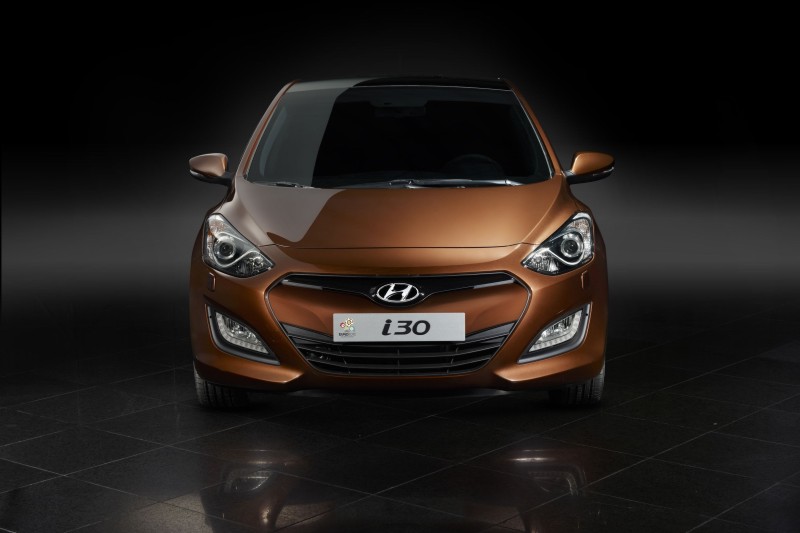
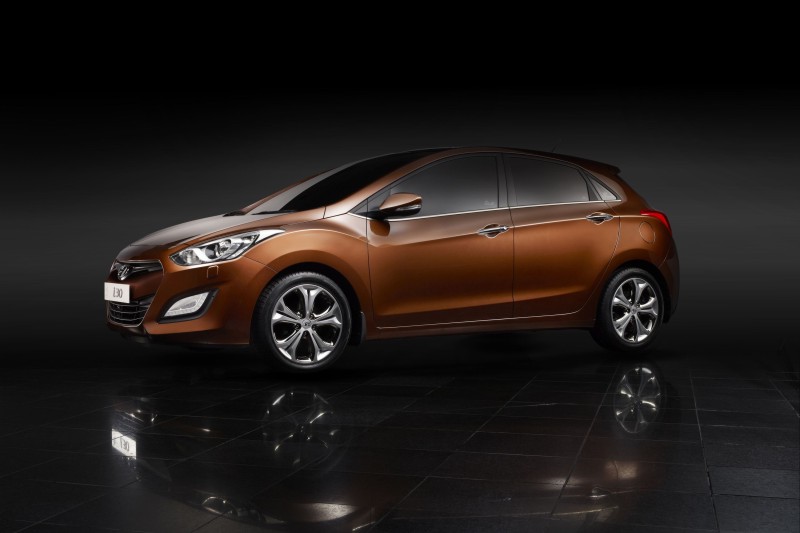
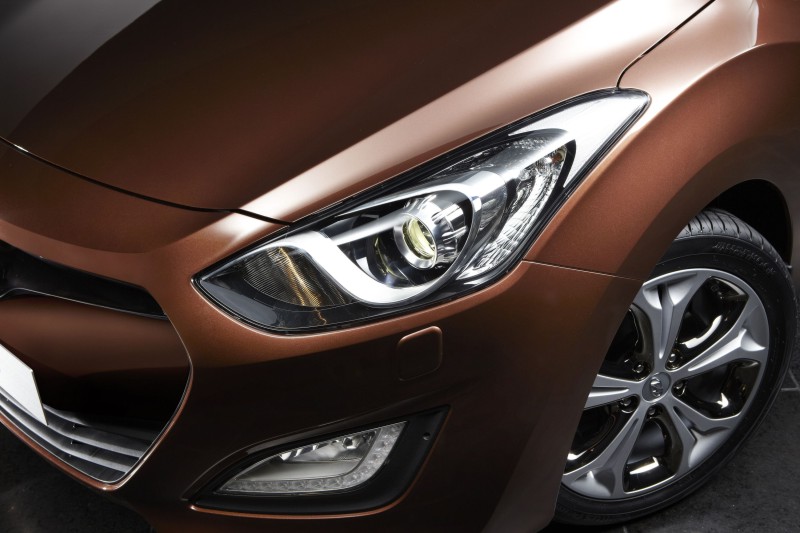
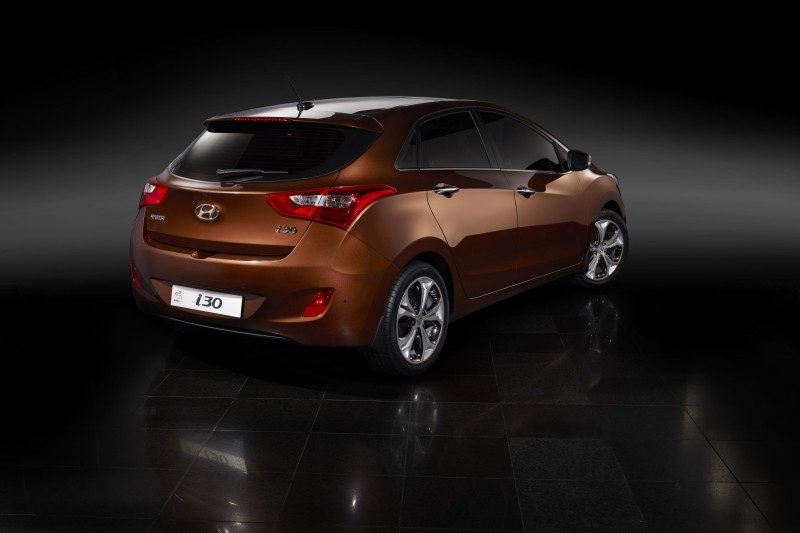
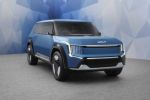 Kia Concept EV9: Die Weiterentwicklung des SUVs
Kia Concept EV9: Die Weiterentwicklung des SUVs KIA prepares launch of 2023 Sportage in Middle East and ...
KIA prepares launch of 2023 Sportage in Middle East and ...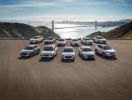 بالرغم من ازمة الشرائح العالمية: هيونداي موتور تطلق عروضًا ترويجية جذابة بمناسبة العودة إلى المدارس في ...
بالرغم من ازمة الشرائح العالمية: هيونداي موتور تطلق عروضًا ترويجية جذابة بمناسبة العودة إلى المدارس في ... KIA PRODUCES THREE MILLIONTH CAR WITH INDUSTRY-LEADING ...
KIA PRODUCES THREE MILLIONTH CAR WITH INDUSTRY-LEADING ... Groupe Renault inaugurates new Alpine A110 production ...
Groupe Renault inaugurates new Alpine A110 production ... All-new KIA Stinger: Extreme Artic winter testing for ...
All-new KIA Stinger: Extreme Artic winter testing for ... Dubai Police and Nissan Join Forces with First ...
Dubai Police and Nissan Join Forces with First ... The 2016 Paris Motor Show: a successful show of new ...
The 2016 Paris Motor Show: a successful show of new ... GB Ghabbour Auto sponsors Cairo University Team at ...
GB Ghabbour Auto sponsors Cairo University Team at ... All-new 2014 Hyundai Genesis arrives to the Middle East ...
All-new 2014 Hyundai Genesis arrives to the Middle East ...
